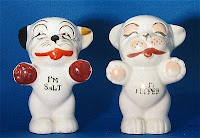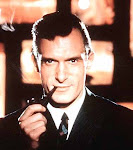Panzer Tier, literally 'Tank Animal', was a 2003 joint project between Tomy, Wave Corporation and Kow Yokoyama. It was basically the 3rd re-release of the rarer 1/24 series of Zoids (Zoids typically being 1/72nd scale) ...

"In 1988, Tomy launched a sub-line of the OJR (Original Japanese Release), featuring larger-scale Zoids. The 1:24 line featuring Zoids of similar size to existing ones, but scaled for larger pilots. Each kit came with a 3 inch tall action figure of the pilot. Like the regular Zoids line, the Zoids were divided into Helic and Zenebas factions. The 1:24 Zoids were not a success, and discontinued after a year"
" In 1990, Tomy re-released several of the 1:24 scale Zoids in a new line called 'Zelve'. The Zoids were re-coloured from the OJR versions, and came with detailed, fixed-pose pilot figures instead of the action figure ones of the OJR. Zelve featured it's own 'Battle Story' on the boxes, but was unrelated to the Zoids battle story. Like the 1/24th Zoids, Zelve was a failure and quickly discontinued"
In 2003 the 'Zenebas Empire' Zoids from the 1/24 line that had been designed by Kow were re-issued under the new name 'Panzer Tier'. The Panzer Tier series box art featured re-colorized versions of the Zevle art (which had originally been painted by Yoshiyuki Takani-san, an artist famed for illustrating hundreds of tanks, combat aircraft and fighting ships since the late 1960's for companies such as Tamiya and Nichimo and also known to have been one of Yokoyama-san's main artistic influences) and a new painting by Kow for the Dontress. They were also re-imagined as 1/20 scale kits when Wave and Kow decided to add larger pilot sculpts by Heel-san of 'Love Love Garden' fame. The series consisted of 5 designs ...
Gorem ... a giant battle-ape armed with a '40mm Hyper Gatling Cannon'. Pilot sits inside the head, other crew can ride on a platform on it's back. Although slower than the Deathpion, the Gorem had much more firepower and was able to match the Megatropos to some levels of success.
The Roadskipper (ostrich type) was originally introduced when the republic was driven into the central mountain range by the first Death Saurers. The Empire made small-scale Zoids for combat in these areas in response to their guerrilla warfare tactics - the Roadskipper, in particular, was rival to the high speed Battlerover, the two being of similar size, speed and overall capability.
Shotwalker ... a lightly armed and armored spider scout.
The Deathpion was the 'weapon of choice' of the Zenebas Empire's special forces. This zoid was very balanced in all areas, making it a formidable opponent, being well armed in terms of both weapons and equipment. It was well protected for a zoid of it's size.
The Dontress, a mantis type zoid armed with 'Hyper Sabres' and a 'Beam Gun'.

















































